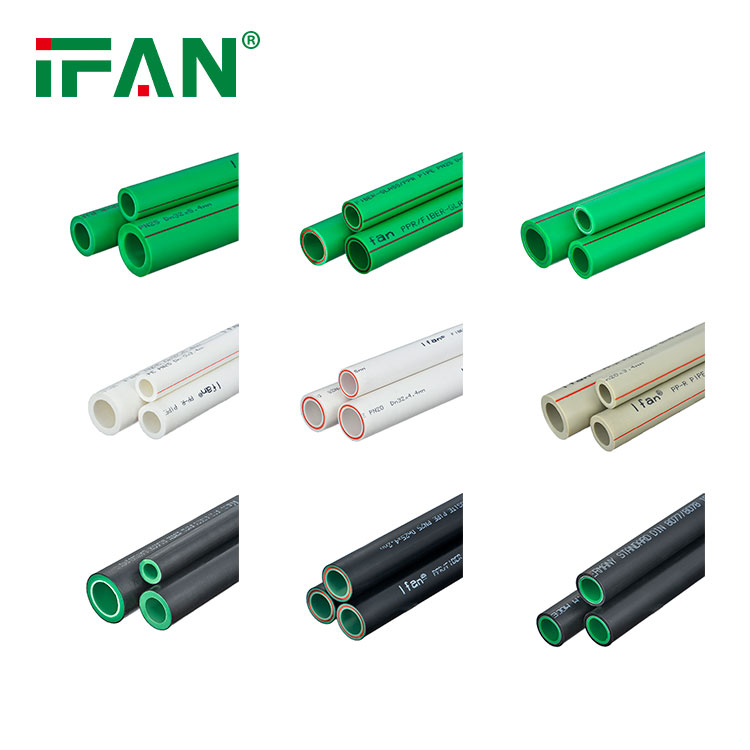PPR Pipes: Revolutionizing Pipeline Solutions Across Industries
PPR Pipes: Revolutionizing Pipeline Solutions Across Industries Polypropylene Random Copolymer (PPR) pipes have emerged as a game-changer in the piping industry, offering a versatile and eco-friendly solution for various applications. In this article, we will delve into the diverse uses and advantages of PPR pipes across different sectors.IFAN factory 30+ years manufacture experience support color/size customization support free sample.Welcome to consult for catalog and free samples.This is our Facebook Website: www.facebook.com.

1. Superior Heat Resistance for Plumbing
1.1. PPR in Residential Plumbing
PPR pipes are increasingly favored in residential plumbing systems due to their remarkable heat resistance. They can efficiently handle hot water, making them ideal for domestic water supply lines and ensuring a reliable and durable plumbing infrastructure.
2. Hygienic Water Supply in Commercial Buildings
2.1. PPR for Commercial Applications
In commercial buildings such as offices, hotels, and hospitals, ensuring a clean and safe water supply is paramount. PPR pipes, with their non-toxic, corrosion-resistant properties, provide a hygienic solution for potable water distribution, safeguarding the health of building occupants.
3. Industrial Applications: Chemical Transport
3.1. PPR’s Role in Chemical Industries
Chemical industries require pipes that can resist aggressive chemicals. PPR pipes excel in this regard, making them a preferred choice for transporting a wide range of chemicals safely and efficiently.
4. Agricultural Irrigation: Promoting Crop Growth
4.1. PPR in Modern Agriculture
Agriculture relies heavily on efficient irrigation systems to maximize crop yield. PPR pipes, known for their durability and resistance to UV radiation, are well-suited for outdoor use, ensuring that water reaches fields consistently and promoting agricultural productivity.
5. Renewable Energy Sector: Sustainable Heat Transfer
5.1. PPR in Solar Water Heating
In the renewable energy sector, PPR pipes play a crucial role in solar water heating systems. Their ability to withstand high temperatures makes them the preferred choice for transferring heat from solar collectors to water, contributing to sustainable energy solutions.
6. Environmental Considerations: Eco-Friendly Material
6.1. PPR’s Environmental Benefits
PPR pipes are recognized for their eco-friendliness. They are recyclable and energy-efficient to produce, reducing their carbon footprint. This aligns with the growing emphasis on sustainability and green practices in modern industries.
Conclusion
Polypropylene Random Copolymer (PPR) pipes have established themselves as a versatile and sustainable solution across various industries. Their exceptional heat resistance, corrosion resistance, and non-toxic properties make them indispensable in residential and commercial plumbing, industrial chemical transport, agricultural irrigation, renewable energy applications, and more. PPR pipes not only provide reliable and efficient solutions but also contribute to environmental conservation, making them a responsible choice for organizations aiming to reduce their impact on the planet.
This article highlights the multifaceted applications of PPR pipes and their significant contributions to diverse industries, offering a comprehensive understanding of their value in modern piping systems.
IFAN
IFAN factory started in 1993. And IFAN has workshop 120000 square meter with 610 staff. IFAN can design and produce all plumbing pipe and fitting include PPR,PVC,CPVC PPSU HDPE PEXA PEXB PERT pipe and fitting ,brass fitting, brass ball valve ,heating system , gas system , sanitary faucets and hose, In the past 30 Years, IFAN has never forgotten his mission-To protect health and safety. And IFAN factory use best materials to produce high quality pipe and fittings with automatic production line and high tech quality control machines.

